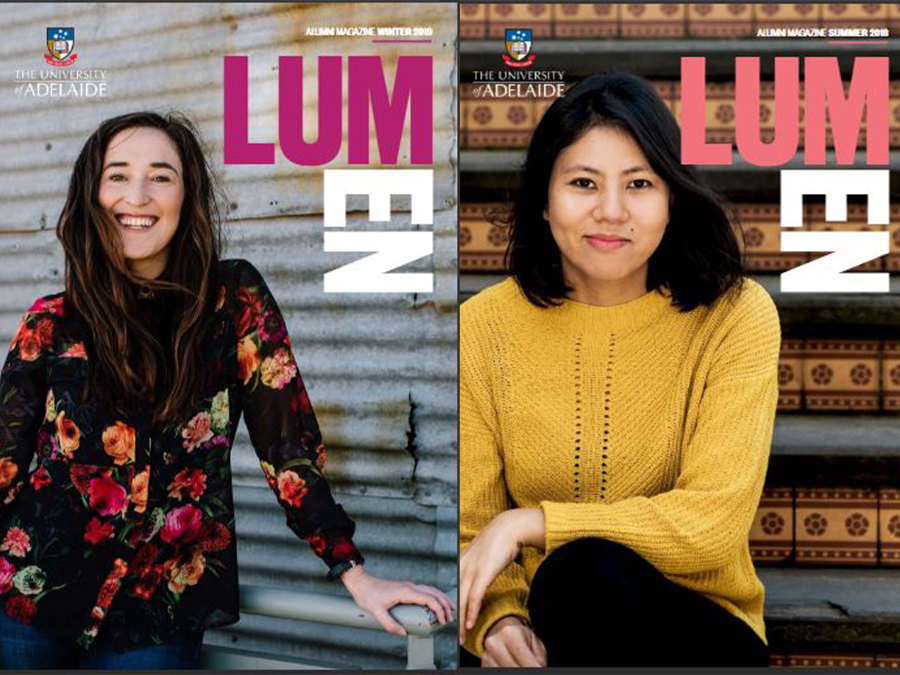Showcasing the future of engineering
Friday, 25 October 2013
From a vehicle that runs on air, through to a chainless bicycle with unlimited gears, and wearable health monitors that are powered with the waste energy from our mobile phones - the University of Adelaide's final-year engineering students will be showcasing their innovations at two free exhibitions on the 30-31 October and 1 November.
Hundreds of schoolchildren, industry representatives and the general public will see the knowledge and skills of our next generation of engineers presented in a range of interactive projects and displays.
Professor John Beynon, Executive Dean of the Faculty of Engineering, Computer and Mathematical Sciences, says: "Engineering lies at the heart of Australia's future prosperity and we can certainly be encouraged by the wonderful innovation shown in these projects.
"The final-year engineering exhibitions not only showcase the talent and creativity of our engineering students but also provide a wonderful opportunity for the general public to have a glimpse of the future of engineering."
"The projects are the culmination of the final year of their engineering degrees and we are particularly appreciative of the wide-ranging support and interest we receive from industry and government."
The exhibitions are:
- MechExpo- the School of Mechanical Engineering's 19th annual Honours project exhibition at the Adelaide Showgrounds, Goyder Pavilion, open to the public on Wednesday 30 October, 6-9pm and Thursday 31 October, 9:30am-4:30pm. Further information at http://mecheng.adelaide.edu.au/mechexpo/
- The School of Electrical and Electronic Engineering's 2013 Project Exhibition at the Atrium, Ground Floor, Ingkarni Wardli, North Terrace Campus on Friday 1 November at 10am-1pm. As well as undergraduate projects, this will include a display of postgraduate research.
Further information at http://www.adelaide.edu.au/news/events/event26441.html
Showcasing the future of engineering - examples of student engineering projects
MechExpo (Adelaide Showgrounds, Wednesday 30 October, 6-9pm and Thursday 31 October, 9:30am-4:30pm)
- Compressed air vehicle: This team of students has converted a go-kart to run on compressed air, as a preliminary study of potential air fuel technologies for larger vehicles with the benefits of zero carbon emission. Air is delivered from storage tanks to an air motor via a pneumatic network. The go-kart has reached a top speed of almost 35km/h.
- Infinity chainless bicycle: This bicycle runs without a chain. The pedals are attached to a generator to create electrical power and an electronic transmission, providing an unlimited gear ratio, possible power assistance and the ability to change gears when stopped.
- Autonomous vortex cannon action game: Students have designed and built a vortex cannon capable of detecting humans via computer-based vision and firing vortex (smoke) rings at them. The game involves players firing vortex rings at a target on the cannon while avoiding being hit by the 'cannon shots'.
- Helix - the cat-falling robot: Students are designing a robot that will land on its feet when dropped upside down. This bio-inspired robot aims to mimic a cat in its self-righting ability.
School of Electrical and Electronic Engineering (Ingkarni Wardli, Friday 1 November, 10am-1pm).
- 'Harvesting' energy from mobile phones: The students are creating a wearable device which takes radio-frequency in the air from the waste energy of mobile phone transmissions, and transforms it into constant DC voltage that can be used to power a biomedical sensor such as an ECG harness. These will be ultimately integrated into clothing. These various health monitors are usually battery powered - making them bulky, needing recharging, and limiting the lifetime of the sensor.
- Adelaide tramline simulation: Students have developed a simulation tool for the Adelaide tramline system for training and safety measures in correctly isolating the power system. The simulation shows the energy status of each area of the tramline and connecting substations, and the operational status of the switches controlling the distribution of electricity.
- New help in disease diagnosis: These students are working on a new method of protein structure identification using unique Terahertz (T-ray) "fingerprints". These proteins are important in various human diseases, including Alzheimer's, Parkinson's and Type 2 diabetes. The "fingerprint" will help in diagnosing the disease.
Contact Details
Email: media@adelaide.edu.au
Website: https://www.adelaide.edu.au/newsroom/
The University of Adelaide
Business: +61 8 8313 0814







